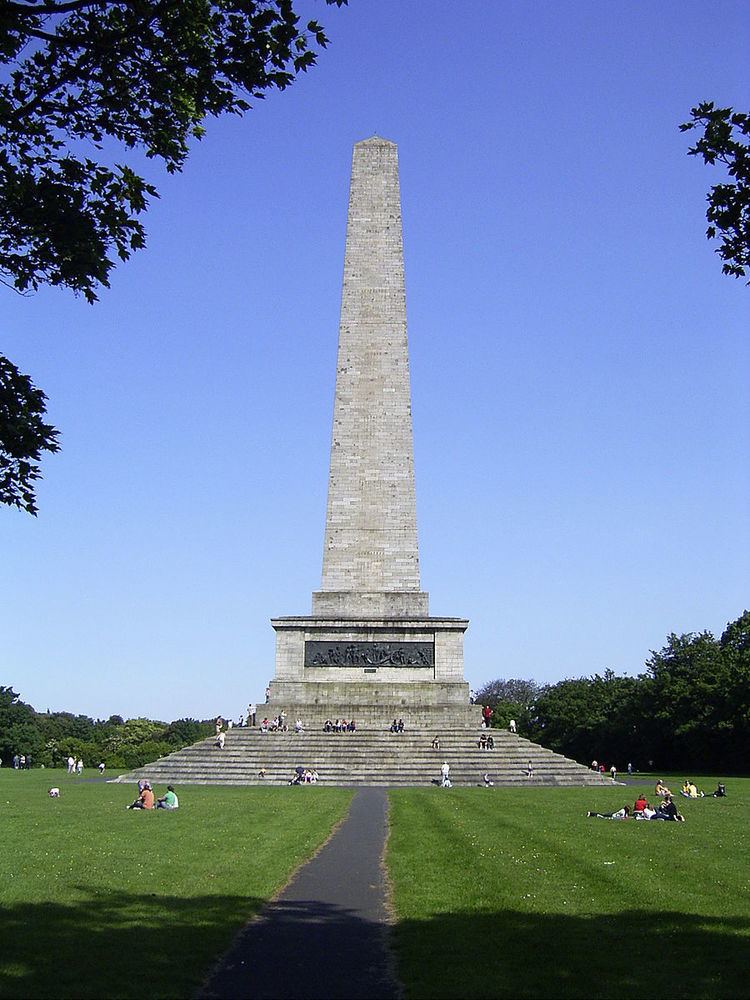Opened 18 June 1861 | Province Leinster | |
 | ||
Similar Phoenix Park, Ashtown Castle, Magazine Fort, Áras an Uachtaráin, Wellington Monument - Somerset | ||
The Wellington Monument (Irish: Leacht Wellington), or more correctly the Wellington Testimonial, is an obelisk located in the Phoenix Park, Dublin, Ireland.
Contents
The testimonial is situated at the southeast end of the Park, overlooking Kilmainham and the River Liffey. The structure is 62 metres (203 ft) tall, making it the largest obelisk in Europe.
History
The Wellington Testimonial was built to commemorate the victories of Arthur Wellesley, 1st Duke of Wellington. Wellington, the British politician and general, also known as the 'Iron Duke', was born in either counties Meath or Dublin. Originally planned to be located in Merrion Square, it was built in the Phoenix Park after opposition from the square's residents.
The obelisk was designed by the architect Sir Robert Smirke and the foundation stone was laid in 1817. In 1820 it ran out of construction funds and therefore remained unfinished until 18 June 1861 when it was opened to the public. There were also plans for a statue of Wellesley on horseback but the shortage of funds ruled that out.
Features
There are four bronze plaques cast from cannons captured at Waterloo - three of which have pictorial representations of his career while the fourth has an inscription. The plaques depict 'Civil and Religious Liberty' by John Hogan, 'Waterloo' by Thomas Farrell and the 'Indian Wars' by Joseph Robinson Kirk. The inscription reads:
Asia and Europe, saved by thee, proclaimInvincible in war thy deathless name,Now round thy brow the civic oak we twineThat every earthly glory may be thine.